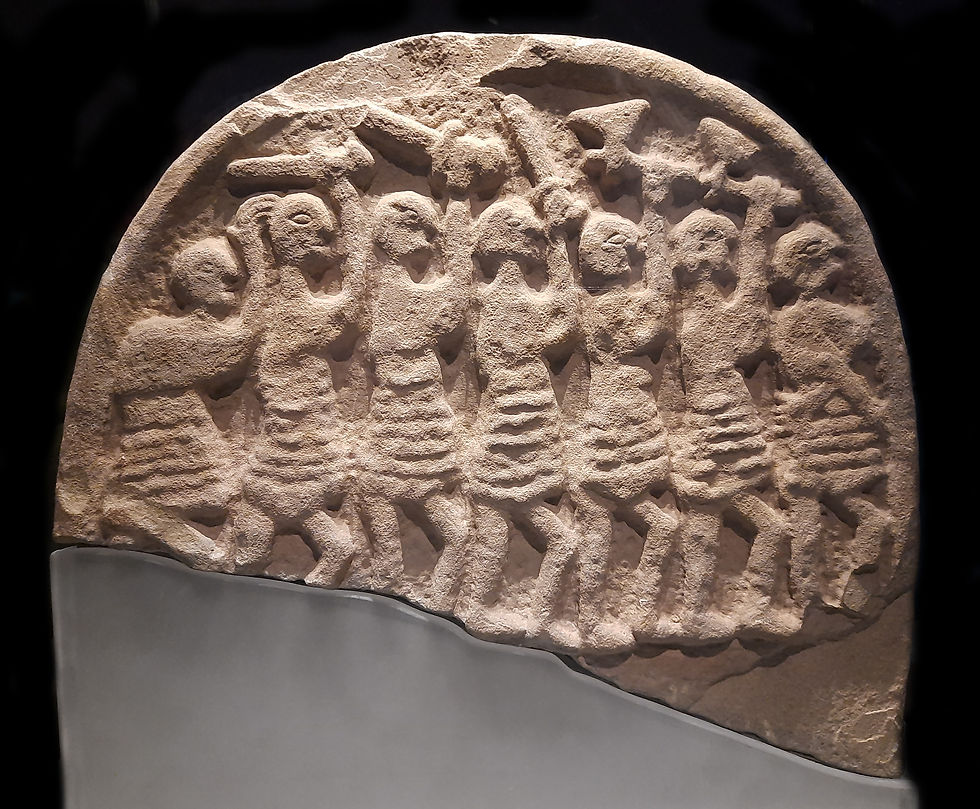The Lindisfarne Raid: The Day the Viking Age Began
- Christopher Rygh
- Jun 8
- 3 min read
Date of Event: June 8, 793 AD
Location: Lindisfarne, Holy Island, Northumbria (modern-day England)
Event: The first recorded Viking raid on British soil

On a seemingly ordinary summer day in 793 AD, a blood-red dawn broke over the shores of Lindisfarne — a small, sacred island off the northeast coast of England. It was home to a peaceful monastery, a center of Christian learning, prayer, and pilgrimage.
But that peace was shattered in a single tide.
From the mist and salt spray came longships — sleek, dragon-headed vessels carved for speed and war. Aboard them: Norsemen. Warriors from the cold North. They came not to trade. Not to talk. But to raid.
What followed was a massacre.
The Attack
The Anglo-Saxon Chronicle, a primary source of early English history, described it with dread:
“In this year came dreadful fore-warnings over the land of the Northumbrians... terrifying flashes of lightning, and fiery dragons were seen flying in the sky... A great famine soon followed, and a little after that, in the same year, on the 8th of June, the ravaging of heathen men miserably destroyed God’s church at Lindisfarne.”
Monks were slaughtered, enslaved, or fled in terror. Sacred relics were stolen or desecrated. Gold, silver, and holy manuscripts — looted and carried back to the fjords. It was the first major Viking raid on the British Isles — and a symbol of what was to come.
To Christian Europe, it was unthinkable. To the Norse, it was just the beginning.
Why Lindisfarne?
The monks had no army. No walls. No weapons.
But they had something else — wealth.
Monasteries in the early Middle Ages were treasure troves: full of silver chalices, golden crosses, jeweled reliquaries, and food stores. Lindisfarne, being both rich and undefended, was the perfect target.
And beyond the loot, attacking a holy site sent a message: the gods of the North had come for the lands of Christ.
The Spark of the Viking Age
Historians mark the raid on Lindisfarne as the beginning of the Viking Age — a nearly 300-year period of Norse expansion, exploration, and conquest that reshaped the map of Europe.
But let’s be clear — this wasn’t random barbarism. The Norse were warriors, yes, but also farmers, traders, and explorers. The raid was calculated. Strategic. Profitable.
It was not the first time the Norse had ventured out of Scandinavia — but it was the first time they made the world tremble.

Aftermath & Legacy
Word of the attack spread like wildfire. Churches across Europe reinforced their doors. Kings raised coastal defenses. And Christian chroniclers began painting the Norse as heathen demons — a narrative that would stick for centuries.
But while the monks prayed for deliverance, the Norse sharpened their blades.
In the decades that followed, Viking raids would strike across Britain, Ireland, Francia, and beyond — eventually leading to Norse settlements, kingdoms, and even Norsemen sitting on English thrones.
And it all began... here.

Remembering Lindisfarne
Today, Lindisfarne Priory stands in ruins — a quiet monument to that violent morning. A place where two worlds collided: one cloaked in robes, the other in chainmail.
For Norse Reign, it’s not just a date. It's a reminder of our ancestors' courage, fire, and unrelenting will to carve their destiny into the bones of history.
June 8, 793 AD — the day the storm made landfall.








Comments